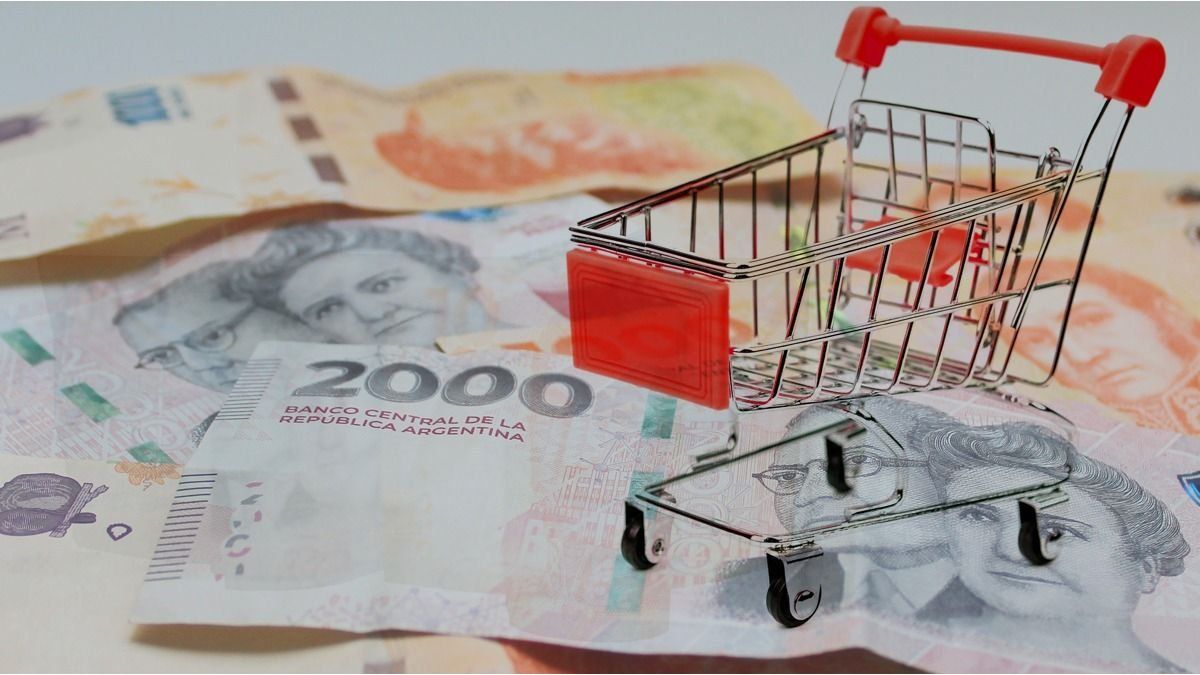Almost three weeks after the implementation of the plan that promises “zero emissions”, or also called Phase 2 of the Government’s economic program, the country’s main consulting firms have fine-tuned their inflation forecasts for July and expect it to be around 4%, but they cannot agree: will it be above or below 4% as Luis Caputo anticipated to the representatives of the ALYCs? The debate will conclude on August 14, when the INDEC will release the final number.
As a preview, the Most analysts They claim that the lower increase in regulated prices This had an impact on the reduction of inflation, an already undisputed priority of the Government, in addition to the fact that the slowdown in some products continues, putting downward pressure on the general figure, in an attempt to bring the CPI to levels close to the “crawling peg” of 2%.
According to specialists Freedom and Progressinflation showed a 3.8% increase in Julya slowdown of 0.8 percentage points compared to the official measurement of 4.6% in June. In the first half of the year, the increase has accumulated by 86.7%.
“The tendency towards a slowdown in inflation is clear and, as long as the depreciation of the currency that occurred in May and June continues to be reversed, we could see some months that start with a 2. That will depend on how and when the arrears in regulated prices and public service rates are corrected,” he said. Aldo Abramdirector of the Freedom and Progress Foundation.
inflation supermarkets wholesale prices consumption
The first two weeks of July saw a sharp rise in prices. Which sectors saw the greatest increase?
Reuters
For its part, Clara Alesina, An economist from the same institution, states that the monthly variation in prices remains positive and that the process of deceleration of inflation continues.
“The Government’s measures contributed to reducing unsupported sources of issuance; the end of Treasury financing through currency issuance and the elimination of the remunerated debt of the BCRA. In return, the purchase of reserves and the payment of debt and interest must be financed with a fiscal surplus or an increase in the genuine demand for pesos, which represents a great challenge for the Government.“It is key to maintain a commitment to fiscal discipline to promote long-term economic stability,” Alesina explained.
Inflation: what numbers do other analysts report?
Unlike the previous forecast, the consultancy C&T said inflation was 4.4% after a survey in PBAwhich was below the 4.9% estimated in June. “Core inflation was 2.7% monthly, just above the 2.6% in June. The gap between both measurements reflects a strong impact of seasonal components on the overall measurement,” the report explained.
On the side of Econviews, According to a weekly survey, a sharp rise was noted in the first two weeks, and a reduction in the third and fourth weeks of the month. In the food category, the strong seasonal component of greengrocers, cleaning and perfumery, and dairy products were the main drivers of prices last month.
From CESOrecorded only in the supermarket sector a monthly price increase of 1.1% according to their survey. They also noted that Fresh Foods registered their largest weekly variation (1.5%). Analyticafor its part, another of the country’s best-known consulting firms, estimated inflation above 4%, by 4.1% and an increase in seasonal prices that reached 6.4%.
For EcoGo July inflation was 4.1%, bringing the year-on-year price increase to 272.7%. Core inflation, meanwhile, reached 3.9%, reflecting a slowdown compared to the previous month. The measurement, which excludes regulated and seasonal items, thus reaches a year-on-year increase of 268.2%, with the increase in the price of goods (292.3%) being considerably higher than that of services (197.2%), he said.
Also the consultant Balance reported its advance inflation indicator for July that reached 3.5%, in line with Ferreres & Asociados. This figure shows an interannual inflation of 261% and an accumulated inflation of 86% in the first seven months of the year.
Refering to core inflationremained stable at around 3.5% (in line with May and June). “But in the disaggregated form, non-seasonal food and beverages rose 2.5% (motivated by the “crawling-peg” to 2%), while the rest of its components grew around 4%, which is partly linked to the rise in the CCL exchange rate in July (+3.6% monthly average), which impacts imports,” the report states.
It was also stressed that the Postponement of tariff adjustments (energy and transport) was important for the decline in inflation for the month, but regulated prices rose more than the general level due to the rise in tobacco (changes were implemented to the internal tax on this good in the Ley Bases). Finally, seasonal prices rose 2.3% motivated by the slight deflation in the price of clothing associated with winter season sales.
Source: Ambito




